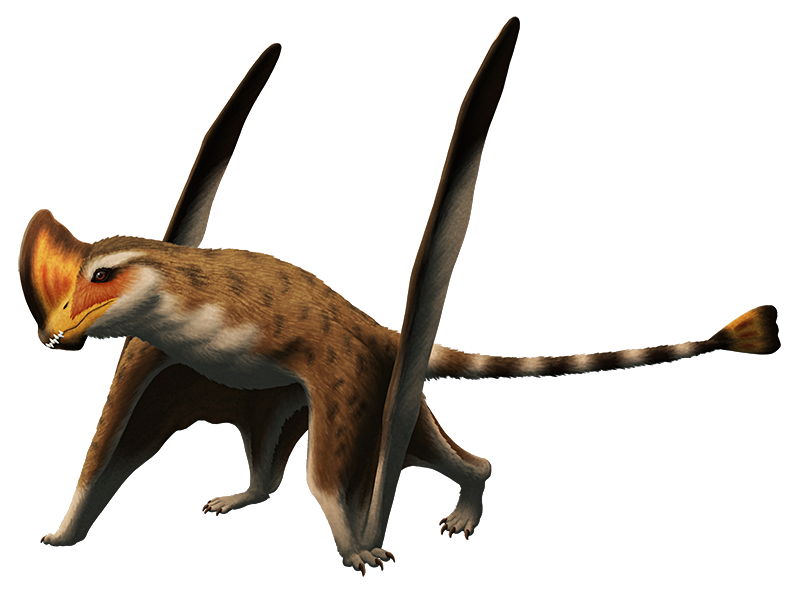Caviramus schesaplanensis, a pterosaur from the Late Triassic of Switzerland (~205 mya). Known from two fossil specimens – a partial jaw and a much more complete skull and skeleton – it was about the size of a modern raven, with a length of around 60cm (2′) and a wingspan of 1.35m (4′5″).
(The more complete fossil is also sometimes considered to be a separate genus and species, Raeticodactylus filisurensis, depending on which pterosaur specialist you ask. If it was a different animal it still would have been very closely related to Caviramus, though, and the two would likely have looked very similar to each other.)
It had some odd anatomy for an early pterosaur, with proportionally long and slender limbs and a fairly heavily-built skull. There were bony crests on both its upper and lower jaws, with the upper crest probably supporting a much larger soft-tissue structure.
Powerful jaw muscles along with a combination of fang-like teeth at the front of its jaws and and serrated slicing-chewing teeth further back suggest it was specialized for eating particularly tough foods such as hard-shelled invertebrates – and it may even have been omnivorous, capable of eating plant matter as well.

